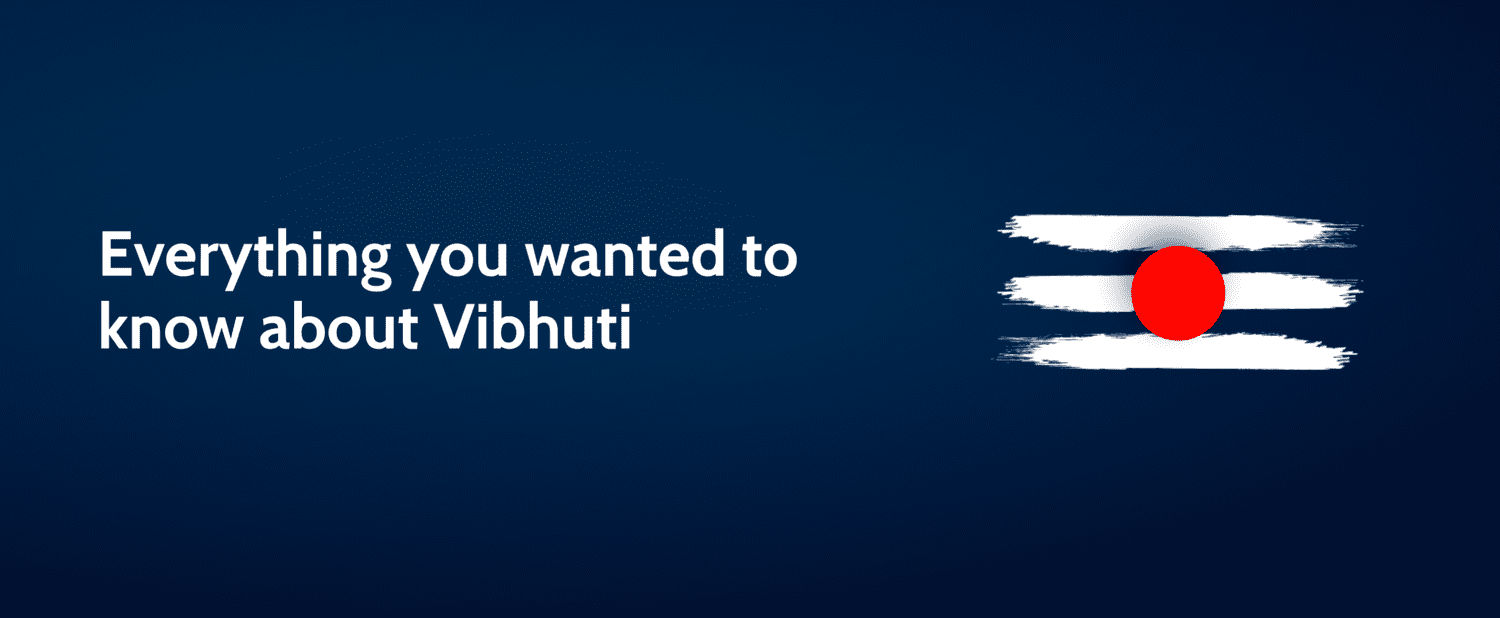Blog
-
18 May
-
30 AprRead more »


Everything you wanted to know about Vibhuti
Vibuti, also commonly known as Tiruneer or Bhasmam is a a sacred ash that is used by Hindus, especially those that follow Shaivism. But generally speaking, the word Vibhuti refers to the great power or siddhis, and is used in the context of God. The adjective ‘Vibhatva’ in Sanskrit is used to describe the power that Nature possesses to create, maintain and even destroy the universe. And the aura that radiates from this kind of power is called vibhati.
-
18 AprRead more »


The Indian Festival of Dolls
One of the most important festivals that is celebrated across India is Navaratri, dedicated to the worship of Goddess Durga. Navaratri is a period of nine consecutive days during which devotees fast and also perform various Pujas and rituals for the Divine Mother in the evenings/nights. Although there are various Navaratris throughout the year, the one that occurs during the autumn, in the Sharad month is most popular and elaborate. This festival is celebrated quite grandly by Indians across the globe adopting new and modern ways of celebrating, with each passing year.
-
3 AprRead more »


Mindfullness and its roots in Hinduism
In recent years, mindfulness has become an increasingly popular practice, especially in the Western world. It has become an important tool that psychologists advocate to deal with a variety of stress related problems in children and adults alike. It involves paying attention to the present moment and being fully engaged in what we're doing, without judgment or distraction. The word ‘mindfulness’ is a really good one and one wonders if there is an equivalent in any Indian language. Although the west has, as always, given the impression that it is a concept they have developed recently, it has in fact been practised for generations and inspired by Hindu traditions.
-
20 MarRead more »


The concept of Daanam in Hindu Culture
Daanam or charity holds a very high place in Santana Dharma. In fact, the scriptures even say that Daanam is our dharma! It advocates that even if one has just a penny, a part of it has to be set aside for daanam. It is considered a virtuous act that brings good karma and is a way to cultivate compassion and generosity with the aim of having a more equitable society. However, many daanams are also prescribed to negate the ill effects of one’s sufferings as well.
In Mahabharata, it is indicated that Knowledge is the friend while traveling; the wife is the friend at home; medicine is the friend of the sick and Daanam is the friend of one who is going to die ie.everyone.
-
3 MarRead more »


Homams – History, Current trends and practices
Almost everyone has a firm belief that any endeavour needs the blessing of the Almighty in order to be a success. For centuries, Hindus have been performing Homam’s or Havan which is essentially a spiritual ritual that involves a holy sacrificial fire. The fire or Agni is invoked as an agent to carry material and symbolic offerings to God. Homams are usually conducted by priests learned in Vedas and shastras on behalf of a family. The belief is that making specific offerings to specific deities will not only result in the successful attainment of any petition that is made, but also grant good health, wealth and prosperity. Therefore, various Homams exist depending on which sect one belongs to or which deity one is propitiating, or what one would like
-
22 FebRead more »


Goddess Lakshmi is considered as the goddess of wealth, prosperity, and abundance in Hinduism.
Goddess Lakshmi is considered as the goddess of wealth, prosperity, and abundance in Hinduism. She is one of the most popular and revered deities in Hinduism and is worshipped in various forms and avatars. The word 'Lakshmi' is derived from the Sanskrit word 'Lakshya' which means goal or aim. She is also known as Shri or Shree, which means auspiciousness, or beauty.

-
6 FebRead more »


Lamps, Vilakkus, diyas: their importance
Lamps hold a significant place in the Hindu culture and are an integral part of daily prayers and religious ceremonies. Lighting a lamp marks the commencement of any religious ceremony and definitely creates a divine atmosphere. It symbolises the dispelling of darkness and ignorance and the invocation of knowledge and enlightenment. Lamps are lit at dawn and dusk in most households and everyone has a ritual that they follow.
Lamps, also called diyas or vilakku come in a variety of materials and in various shapes, sizes and wick edges too. Nearly every home in India follows the tradition of lighting a lamp everyday to increase the positive energies.
-
2 JanRead more »
Incense and it's popular forms
Aromatherapy is a holistic therapy that has been used for millennia to boost mental, bodily, and spiritual health as well as to facilitate healing. Incense sticks like Nag champa incense plays as important role in it since they have high essential oil content, incense sticks are highly used for therapeutic purpose, and Now a days incense sticks are used for stress Management too.
The simplest definition of incense is any plant material that is burned for its aromatic or spiritual benefits. Incense comes in many different forms. Agarbatti/ Incense Sticks, spirals or coils, cones, loose powders, and uncooked plant ingredients are some popular forms.
Incense sticks can be used for a variety of purposes, including aesthetic, spiritual, religious, and meditational ones.
-
23 JunRead more »
Aadi Masam or Aadi is the fourth month in Tamil Calendar and is termed inauspicious by many as the Dakshinayana Punyakalam begins in this month. In 2022, the Aadi Masam begins on July 15 and ends on August 10.



